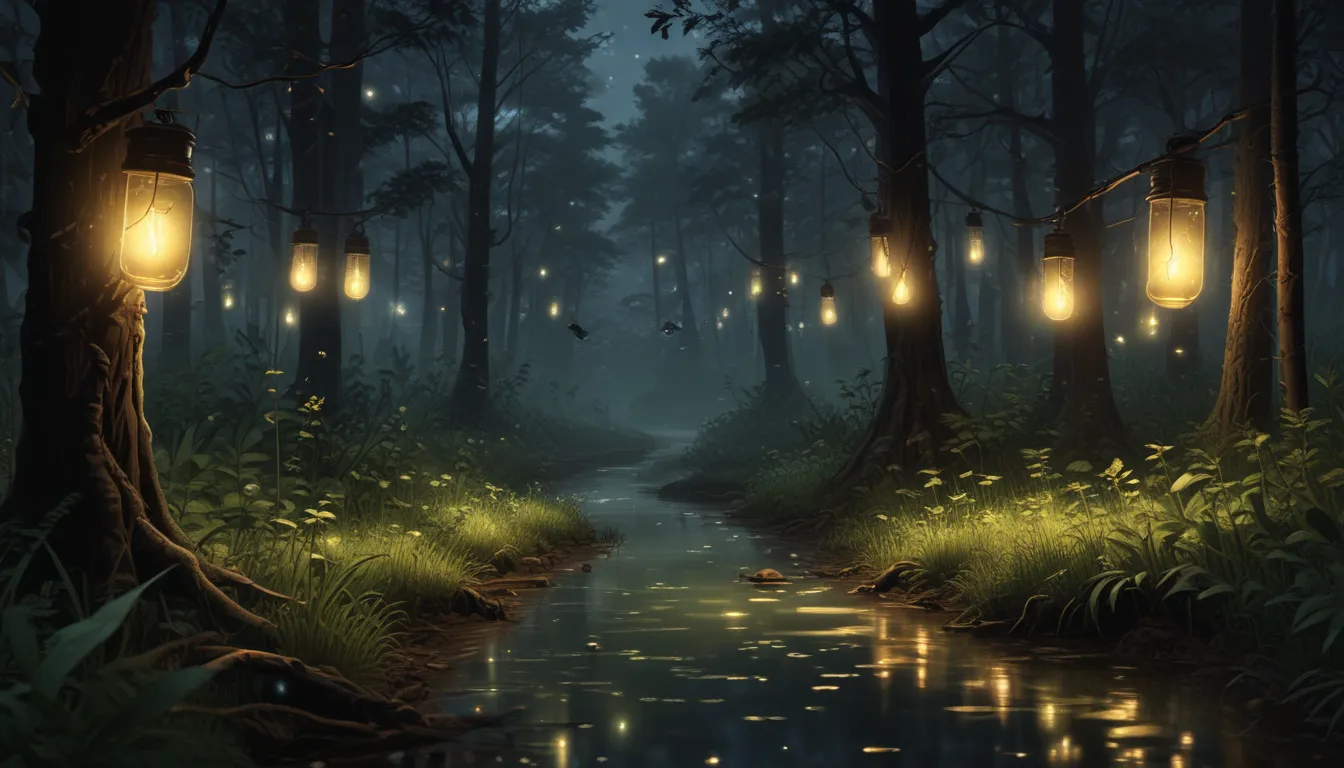The pictures we use in our articles might not show exactly what the words say. We choose these pictures to make you interested in reading more. The pictures work together with the words but don’t take their place. The words still tell you the important facts.
Fireflies, also known as lightning bugs, have captivated the awe and curiosity of humans for centuries with their mesmerizing light displays. These enchanting insects are not only beautiful to behold but also play a vital role in the ecosystem as bioindicators, reflecting the environmental health of an area. In this article, we will delve into the intriguing world of fireflies and uncover 18 fascinating facts about these remarkable creatures. From their unique communication through flashing lights to their potential in medical research, fireflies have much more to offer than meets the eye. Join us on this illuminating journey as we explore the secrets of fireflies.
Key Takeaways:
- Fireflies communicate through flashing lights, with each species having its unique pattern. They play a crucial role in the ecosystem and are celebrated in cultural festivals, yet face threats like habitat loss and climate change.
- Fireflies can be found in diverse habitats worldwide and have potential for medical research due to their bioluminescence.
Firefly Lifecycle
Fireflies undergo a fascinating transformation, starting as eggs that hatch into larvae known as glow worms. These glow worms eventually develop into adult fireflies, completing their lifecycle.
Bioluminescent Light
Fireflies produce light through bioluminescence, a chemical reaction within their bodies involving luciferin and the enzyme luciferase. This unique ability allows them to emit a mesmerizing glow.
Communication through Flashing
Fireflies use their light signals to communicate with each other. Each species has its distinctive pattern of flashing, enabling them to identify potential mates and ward off predators.
Firefly Synchronization
In some areas, fireflies exhibit synchronous flashing, where hundreds of them flash in unison, creating a magical display of synchronized light. This phenomenon is a sight to behold in nature.
Firefly Diversity
There are over 2,000 known species of fireflies worldwide, each with unique characteristics including differences in their flashing patterns and preferred habitats. The diversity of fireflies adds to the richness of their ecosystem.
Firefly Symbolism
Fireflies are often associated with various cultural symbolism, representing love, romance, hope, and spirituality. Their glowing presence has inspired poets, artists, and storytellers throughout history.
Firefly Lifespan
The lifespan of a firefly varies depending on the species. While some may live only a few weeks as adults, others can have a lifespan of up to a couple of months, showcasing the diversity of their lifecycles.
Firefly Habitat
Fireflies can be found in a diverse range of habitats, including forests, grasslands, wetlands, and even urban areas. They thrive in warm and humid regions, contributing to the biodiversity of their environments.
Firefly Courtship Rituals
Male fireflies use their flashing patterns to attract female fireflies for mating. They display specific flight patterns and synchronize their flashes to signal their availability, showcasing the intricacies of their courtship rituals.
Firefly Predators
Fireflies face various predators such as spiders, birds, bats, and even other fireflies. Some predators mimic the flashing patterns of fireflies to attract and consume them, posing a threat to their populations.
Firefly Glow as a Warning Signal
Some firefly species emit a bitter-tasting chemical along with their glow, serving as a warning to predators that they are unpalatable. This unique defense mechanism helps them survive in their habitats.
Firefly Medicinal Potential
Firefly bioluminescence has shown potential in medical research, with scientists exploring ways to utilize their glow for applications like cancer detection and monitoring cellular activity. Their illuminating light has promising implications for future discoveries.
Firefly Geographical Distribution
Fireflies can be found on every continent except Antarctica, with the highest diversity and abundance in tropical and temperate regions. Their wide distribution showcases their adaptability to various climates and habitats.
Firefly Feeding Habits
Fireflies primarily feed on nectar and pollen as adults, contributing to pollination in their ecosystems. During their larval stage, they are carnivorous and consume small insects, snails, and earthworms, showcasing their diverse diet.
Firefly Glow Control
Fireflies have the ability to control the intensity and duration of their glowing light, allowing them to conserve energy when necessary. This adaptive trait helps them thrive in their environments.
Firefly Cultural Celebrations
In certain countries, fireflies are celebrated through festivals and events where people gather to witness their dazzling displays in the summer months. These celebrations highlight the cultural significance and beauty of fireflies in different societies.
Firefly Decline and Conservation
Fireflies are facing numerous threats, including habitat loss, light pollution, pesticide use, and climate change. Conservation efforts are essential to ensure their survival and maintain the balance of their ecosystems.
Fireflies as Bioindicators
Fireflies are considered bioindicators of environmental health, with their abundance and diversity reflecting the ecological balance of an ecosystem. Monitoring firefly populations can provide valuable insights into the health of their habitats.
Fireflies truly captivate our imagination with their mystical glow and fascinating behavior. Learning about these incredible insects deepens our appreciation for the wonders of the natural world. Ensuring the conservation of fireflies is crucial to safeguarding their beauty and ecological contributions for future generations to enjoy.
FAQs
-
How do fireflies produce light?
Fireflies produce light through a chemical reaction called bioluminescence involving luciferin and luciferase. -
Why do fireflies light up?
Fireflies light up to communicate with each other, particularly during the mating season to attract mates. -
Where can fireflies be found?
Fireflies can be found in various habitats worldwide, including forests, grasslands, wetlands, and gardens. -
Do all fireflies produce light?
Not all fireflies produce light; some species known as "dark fireflies" do not possess bioluminescent abilities. -
How long do fireflies live?
The lifespan of a firefly varies by species, with adults living from a few weeks to a couple of months.
Fireflies continue to inspire wonder and fascination with their radiant glow, reminding us of the beauty and diversity of the natural world. By appreciating and protecting these magical creatures, we can preserve their enchanting presence for generations to come. Let the shimmering light of fireflies guide us towards a future where nature's brilliance shines brightly.






